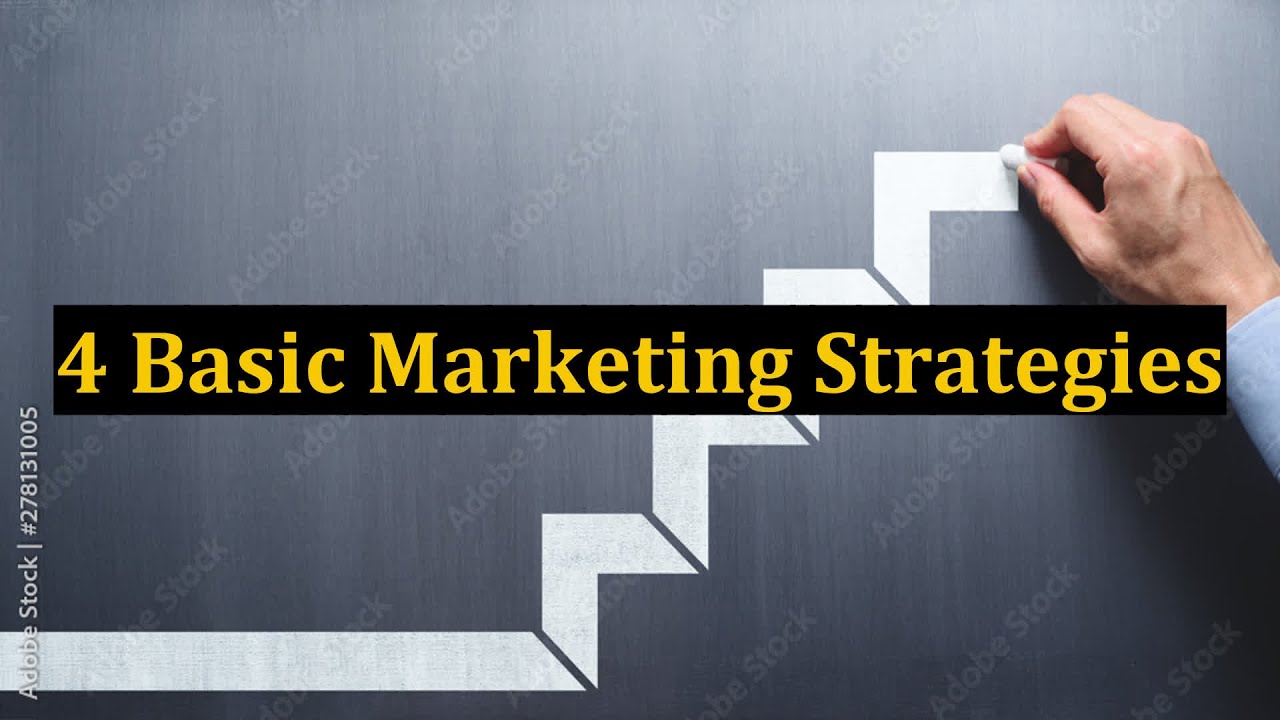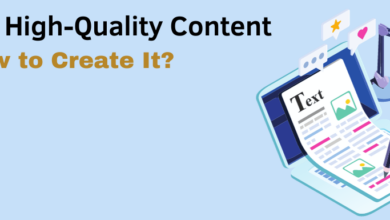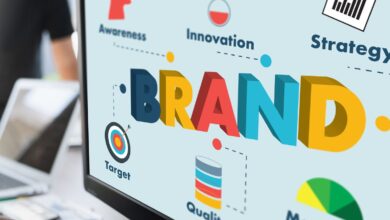
5 Essential Tips on Marketing to the Masses
5 Essential Tips on Marketing to the Masses – Ever wondered how to connect with a massive audience and make your brand resonate? Reaching the masses isn’t about shouting louder; it’s about understanding, crafting the right message, and choosing the perfect channels. This post dives deep into five essential strategies that will help you effectively market to a diverse group of people, turning potential customers into loyal fans.
We’ll explore how to create buyer personas to truly understand your audience, craft compelling messages that cut through the noise, and select cost-effective marketing channels that maximize your reach. We’ll also cover the importance of measuring your results, optimizing your campaigns, and building lasting brand loyalty. Get ready to transform your marketing strategy and unlock the power of mass appeal!
Understanding Your Target Audience
Marketing to the masses requires a nuanced understanding of the diverse group you’re trying to reach. It’s not a one-size-fits-all approach; instead, it demands segmentation and tailored messaging to resonate effectively. Ignoring the intricacies of your audience will lead to wasted resources and ineffective campaigns.
To effectively market to the masses, we need a clear picture of who constitutes this group. Let’s construct a generalized buyer persona representing the “masses” – a fictional individual named “Average Joe” (or “Average Jane”). Average Joe is 35 years old, has a household income slightly above the national median, and holds a bachelor’s degree. He’s active on social media, values convenience and affordability, and is influenced by online reviews and word-of-mouth recommendations.
This is, of course, a broad generalization, but it serves as a starting point for segmentation.
Buyer Persona Segmentation
While “Average Joe” provides a baseline, the “masses” are far from homogenous. We can segment this broad audience into at least three distinct groups, each with unique needs and preferences. Understanding these differences is crucial for crafting effective marketing strategies.
Three Distinct Segments Within the Masses
We can segment the “masses” into three distinct groups: the Value Seekers, the Convenience Consumers, and the Experience Hunters.
Value Seekers: This group prioritizes affordability and functionality above all else. They are meticulous researchers, comparing prices and features before making a purchase. They are often influenced by discounts, sales, and testimonials emphasizing value for money. Think of someone carefully comparing different brands of washing machines, prioritizing the one with the best features at the lowest price.
Convenience Consumers: This segment values speed and ease of access. They are willing to pay a premium for convenience, such as one-click ordering, fast delivery, or readily available customer support. They prioritize time-saving solutions and seamless user experiences. Imagine someone ordering groceries online for delivery, willing to pay extra for the convenience of not having to go to the store.
Experience Hunters: This group seeks unique and memorable experiences. They are less price-sensitive and prioritize quality, craftsmanship, and brand storytelling. They are influenced by aspirational content and personalized interactions. Think of someone booking a luxury vacation, driven by the promise of an unforgettable experience rather than the lowest price.
Challenges of Marketing to Diverse Groups
Marketing to such a diverse group presents significant challenges. The key difficulty lies in creating messaging that resonates with each segment without alienating others. A message that appeals to Value Seekers might seem cheap or unappealing to Experience Hunters, and vice-versa. Furthermore, consistent brand messaging across all platforms and channels becomes complex when targeting such a wide range of needs and preferences.
Another significant challenge is accurately measuring the effectiveness of campaigns across these different segments, requiring sophisticated analytics and tracking mechanisms.
Effective Communication Styles
Tailoring communication styles is essential for reaching each segment effectively. The following table highlights effective approaches for each group:
| Segment | Communication Style | Channels | Messaging Focus |
|---|---|---|---|
| Value Seekers | Direct, factual, and data-driven | Comparison websites, price aggregators, email marketing | Price, features, benefits, and guarantees |
| Convenience Consumers | Simple, concise, and visually appealing | Social media, mobile apps, targeted advertising | Ease of use, speed, convenience, and seamless experience |
| Experience Hunters | Storytelling, aspirational, and emotionally engaging | High-quality visuals, influencer marketing, brand storytelling | Exclusivity, quality, craftsmanship, and brand values |
Crafting a Compelling Message

Source: ytimg.com
Reaching the masses requires more than just a good product; it demands a message that grabs attention and resonates. Your message is the bridge connecting your product or service to the desires and needs of your potential customers. A compelling message isn’t just about what you offer, but how it solves problems and improves lives. It’s about crafting a narrative that people want to be a part of.Creating a truly compelling message involves understanding the diverse needs and aspirations of your audience.
It requires tailoring your communication to speak directly to their hopes, fears, and motivations. This involves crafting different value propositions to appeal to specific segments of the broader audience.
Three Unique Value Propositions
Developing unique value propositions is key to effectively marketing to the masses. Instead of a one-size-fits-all approach, consider crafting tailored messages for different segments. For example, imagine you’re selling a new type of athletic shoe. You could have:
- Value Proposition 1 (Performance Focused): “Unleash your inner athlete with superior cushioning and responsiveness for peak performance. Experience the difference.” This targets serious athletes prioritizing performance.
- Value Proposition 2 (Comfort Focused): “All-day comfort meets stylish design. Experience unparalleled support and cushioning for your everyday adventures.” This appeals to those prioritizing comfort and style.
- Value Proposition 3 (Budget Conscious): “High-quality athletic footwear without the premium price tag. Get the performance you need without breaking the bank.” This speaks to budget-minded consumers.
Examples of Resonating Marketing Slogans
Successful marketing often hinges on memorable slogans. These short, catchy phrases encapsulate the brand’s essence and resonate with a broad audience. Consider these examples:
- “Just Do It” (Nike)
– Focuses on empowerment and action. - “I’m Lovin’ It” (McDonald’s)
– Conveys happiness and enjoyment. - “Think Different” (Apple)
– Appeals to creativity and individuality.
These slogans are simple, memorable, and evoke strong emotional responses.
Simplicity and Clarity in Messaging
In the crowded marketplace, simplicity and clarity are paramount. Avoid jargon, technical terms, and overly complex sentence structures. Your message should be easily understood by everyone, regardless of their background or level of expertise. The clearer your message, the more likely it is to resonate and be remembered. A good rule of thumb is to ensure a child could understand the core message.
Five Key Emotional Triggers in Marketing
Emotions are powerful drivers of consumer behavior. By tapping into key emotional triggers, you can create a deeper connection with your audience and increase the likelihood of conversion.
- Joy/Happiness: Showcasing the positive experiences associated with your product or service.
- Fear/Anxiety: Highlighting the potential negative consequences of not using your product or service (used responsibly and ethically).
- Love/Connection: Emphasizing the relationships and bonds strengthened through your product or service.
- Hope/Inspiration: Offering a vision of a better future achievable with your product or service.
- Trust/Security: Building confidence and reliability in your brand through testimonials and guarantees.
Choosing the Right Channels
Reaching a massive audience effectively requires a strategic approach to channel selection. The right channels will depend on your target audience’s demographics, online behavior, and the nature of your product or service. Focusing your efforts on the most impactful channels maximizes your return on investment and ensures your message resonates with the intended recipients.Choosing the right marketing channels is crucial for effective mass outreach.
While a multi-channel approach is often ideal, prioritizing cost-effective options is essential, especially for businesses with limited budgets. Understanding the strengths and weaknesses of each platform allows for informed decision-making and optimized resource allocation.
Cost-Effective Marketing Channels for Mass Reach
Three highly cost-effective channels for reaching a large audience are social media marketing, email marketing, and content marketing. Social media platforms like Facebook, Instagram, and TikTok offer organic reach potential, although paid advertising can significantly amplify results. Email marketing allows for direct communication with subscribers, nurturing leads and driving conversions. Content marketing, through blog posts, articles, and videos, attracts organic traffic and establishes your brand as a thought leader.
Each channel requires a different approach, but all can be leveraged effectively with minimal financial investment.
Social Media Marketing Versus Traditional Advertising
Social media marketing and traditional advertising both aim for mass reach, but their approaches and effectiveness differ significantly. Social media marketing offers targeted advertising options based on demographics, interests, and online behavior, allowing for precise audience segmentation. It also facilitates two-way communication, fostering brand loyalty and building community. However, organic reach on social media can be challenging, requiring consistent effort and potentially paid advertising to maximize visibility.
Traditional advertising, such as television or print, offers broad reach but lacks the targeting capabilities of social media. It’s typically more expensive and less measurable in terms of direct return on investment. While traditional advertising might still be relevant for certain demographics, social media’s targeting and engagement potential make it a more compelling option for many businesses seeking mass reach in today’s digital landscape.
Utilizing Free or Low-Cost Online Tools
Numerous free or low-cost online tools can significantly enhance your marketing outreach. For example, Canva offers user-friendly design tools for creating visually appealing social media graphics and marketing materials. Google Analytics provides invaluable insights into website traffic and user behavior, helping you optimize your content and campaigns. Mailchimp offers a free plan for email marketing, enabling you to build an email list and send newsletters to subscribers.
Utilizing these free tools can significantly reduce marketing costs without compromising the quality or effectiveness of your campaigns. Many other similar tools exist, offering various functionalities to enhance your marketing strategy.
Reach and Engagement Potential of Different Channels, 5 essential tips on marketing to the masses
| Channel | Reach Potential | Engagement Potential | Cost |
|---|---|---|---|
| Social Media (Facebook, Instagram, TikTok) | Very High (Billions of users globally) | High (depending on content and engagement strategy) | Low to High (organic vs. paid) |
| Email Marketing | High (depending on list size and open rates) | Medium to High (depending on email content and call to action) | Low (free and paid options available) |
| Content Marketing (Blog, Articles, Videos) | Medium to High (depending on and content quality) | Medium (depends on content quality and sharing) | Low (primarily time investment) |
| Traditional Advertising (TV, Print) | Very High (broad reach) | Low to Medium (limited interaction) | High |
Measuring and Optimizing Your Campaigns

Source: slideteam.net
Reaching a massive audience is only half the battle; understanding if your message resonates and adjusts accordingly is crucial. Effective mass marketing requires constant monitoring and optimization. Without it, you’re essentially throwing darts in the dark, hoping some stick. This section focuses on practical strategies for measuring campaign success and using data to improve your results.
Measuring the effectiveness of your mass marketing campaigns relies heavily on selecting and interpreting the right Key Performance Indicators (KPIs). These metrics provide a clear picture of your campaign’s performance across various channels, enabling data-driven decisions to enhance your ROI.
Key Performance Indicators (KPIs) for Mass Marketing
Choosing the right KPIs depends on your specific marketing goals, but some consistently provide valuable insights. Focusing on these three will give you a strong foundation for understanding your campaign’s success.
- Website Traffic: This measures the number of visitors to your website from your marketing campaigns. You can track this using tools like Google Analytics, paying attention to metrics like unique visitors, bounce rate, and time spent on site. High traffic with a low bounce rate indicates engaging content and effective targeting.
- Conversion Rate: This KPI focuses on the percentage of website visitors who complete a desired action, such as making a purchase, signing up for a newsletter, or filling out a contact form. A high conversion rate signifies effective messaging and a clear call to action. For example, a 5% conversion rate on a campaign aiming for newsletter sign-ups is generally considered good, while a 1% rate might suggest needing optimization.
- Return on Investment (ROI): This is the ultimate measure of your campaign’s success, calculating the profit generated relative to the investment made. The formula is: (Revenue – Cost) / Cost
– 100% . A positive ROI demonstrates a profitable campaign, while a negative ROI indicates areas needing improvement. For instance, if a campaign cost $10,000 and generated $20,000 in revenue, the ROI would be 100%.
Interpreting Data from Different Marketing Channels
Mass marketing often involves multiple channels (social media, email, paid advertising, etc.). Analyzing data from each channel individually is vital to understanding which strategies are most effective. For example, a social media campaign might have a high engagement rate but a low conversion rate, indicating the need to refine the call to action. Conversely, an email campaign might have a lower engagement rate but a higher conversion rate, suggesting a highly targeted and effective email list.
Tools like Google Analytics provide detailed channel-specific reports, allowing you to compare performance metrics and identify high-performing and underperforming channels. This granular analysis helps allocate resources more efficiently, focusing on channels that deliver the best results.
A/B Testing Strategies for Optimization
A/B testing involves creating two versions of a marketing material (e.g., an email subject line, a website banner, or a social media ad) and comparing their performance. This allows for data-driven decision-making to optimize your campaigns.
- Example 1: Email Subject Lines. Test two different subject lines, one focusing on a benefit (“Save 20% on Your Next Order!”) and another focusing on urgency (“Don’t Miss Out! Limited-Time Offer”). Track open rates and click-through rates to determine which subject line is more effective.
- Example 2: Website Call-to-Action Buttons. Compare two versions of a call-to-action button – one using a strong verb (“Shop Now!”) and another using a softer approach (“Learn More”). Monitor click-through rates to see which button design drives more conversions.
- Example 3: Social Media Ad Creatives. Test different images or video creatives for your social media ads. Analyze click-through rates and conversions to identify the most engaging visual elements.
Campaign Performance Reporting Framework
A simple reporting framework ensures consistent tracking and analysis of your campaign performance. This framework should include key metrics, channel-specific data, and a comparison of results against set goals.
| Metric | Channel A (e.g., Email) | Channel B (e.g., Social Media) | Goal |
|---|---|---|---|
| Website Traffic | 10,000 | 5,000 | 15,000 |
| Conversion Rate | 5% | 2% | 3% |
| ROI | 150% | 75% | 100% |
This table provides a clear snapshot of campaign performance, enabling quick identification of successful and underperforming areas. Regular reporting allows for continuous optimization and improved campaign effectiveness.
Maintaining Consistency and Building Brand Loyalty
Building a successful brand that resonates with the masses isn’t a sprint; it’s a marathon. While reaching a wide audience requires clever messaging and strategic channel selection, the true key to long-term success lies in maintaining consistency and fostering unwavering brand loyalty. Consistent branding builds trust, recognition, and ultimately, repeat business.Consistent branding ensures that your message and visual identity remain unified across all platforms.
This means your logo, color palette, tone of voice, and overall messaging should be recognizable and consistent whether a customer encounters your brand on social media, your website, or in a physical store. Inconsistent branding can confuse customers and dilute your brand’s message, hindering your ability to build a strong and recognizable identity.
Consistent Branding Across Marketing Channels
Maintaining a consistent brand image across all your marketing channels is paramount. Imagine a company with a playful, vibrant logo on its website but uses a stark, corporate tone on its social media. This inconsistency can create a disjointed brand experience, leaving customers unsure of what the brand truly represents. Instead, strive for a unified approach. If your brand is known for its humor, inject that humor into all your marketing materials.
If your brand emphasizes professionalism, maintain a formal and sophisticated tone across the board. This unified approach fosters trust and builds a strong, memorable brand identity. Coca-Cola, for example, has maintained a remarkably consistent brand identity for over a century, using its iconic logo and red and white color scheme across all its marketing materials, solidifying its position as a globally recognized brand.
Successful Long-Term Brand Building Strategies
Several major companies have successfully built lasting brand loyalty through consistent, long-term strategies. Apple, for instance, cultivates a premium brand image through sleek product design, minimalist marketing, and a focus on user experience. This consistent messaging, coupled with high-quality products, has fostered immense brand loyalty. Similarly, Nike’s “Just Do It” campaign, launched in 1988, remains a powerful and enduring brand message, consistently associating the brand with athletic achievement and motivation.
This long-term commitment to a core brand message has solidified Nike’s position as a global leader in athletic apparel and footwear. These examples demonstrate the power of long-term brand building through consistent messaging and a strong brand identity.
Methods for Fostering Customer Loyalty
Building customer loyalty involves more than just consistent branding; it requires actively engaging with your customers and providing exceptional experiences. Implementing a robust loyalty program, offering exclusive discounts and promotions to repeat customers, is a proven method. Personalized communication, such as customized email marketing based on past purchases or browsing history, shows customers you value their individual preferences.
Active listening and responding to customer feedback, both positive and negative, demonstrate a commitment to customer satisfaction. Proactively addressing customer concerns and resolving issues quickly builds trust and strengthens the customer-brand relationship. Companies like Starbucks successfully utilize loyalty programs and personalized offers to incentivize repeat business and cultivate strong customer relationships.
Building a Strong Brand Identity Timeline
Building a strong brand identity for mass appeal is a process that requires careful planning and consistent effort. The following timeline Artikels key steps:
- Months 1-3: Market Research & Brand Definition: Conduct thorough market research to identify your target audience, competitors, and market trends. Define your brand’s mission, values, and unique selling proposition (USP).
- Months 4-6: Brand Identity Development: Develop your brand’s visual identity, including logo design, color palette, typography, and overall aesthetic. Craft your brand voice and tone.
- Months 7-9: Marketing Strategy & Channel Selection: Develop a comprehensive marketing strategy outlining your target audience, key messages, and chosen marketing channels. Begin implementing your marketing campaigns.
- Months 10-12: Monitoring, Optimization, and Feedback: Continuously monitor your marketing campaigns’ performance, gather customer feedback, and optimize your strategies based on data and insights. Refine your brand identity based on customer response.
- Ongoing: Consistency & Brand Building: Maintain consistent branding across all channels, fostering customer loyalty through engagement and exceptional experiences. Continuously adapt and evolve your brand strategy to stay relevant and meet changing market demands.
Ending Remarks: 5 Essential Tips On Marketing To The Masses
Mastering the art of marketing to the masses is a journey, not a sprint. By consistently applying these five essential tips – understanding your audience, crafting a compelling message, selecting the right channels, measuring your results, and building brand loyalty – you can effectively reach a vast audience and build a thriving business. Remember, it’s about building genuine connections and providing real value.
So, go forth and conquer the market!
FAQ Section
What if my target audience is too diverse to create a single message?
Segment your audience into smaller, more homogenous groups. Craft tailored messages that resonate with each segment’s unique needs and preferences.
How can I measure the success of my mass marketing campaigns effectively?
Track key performance indicators (KPIs) like website traffic, conversion rates, social media engagement, and customer acquisition cost. Analyze the data to identify what’s working and what’s not.
What are some examples of cost-effective marketing channels for reaching a large audience?
Consider social media marketing (organic and paid), email marketing, content marketing (blogging, video), and search engine optimization ().
How long does it typically take to see results from a mass marketing campaign?
It varies greatly depending on the campaign’s complexity, the chosen channels, and the target audience. Some campaigns show quick results, while others require a longer-term strategy.
How do I maintain brand consistency across multiple channels?
Develop a comprehensive brand style guide that Artikels your brand voice, visual identity, and messaging guidelines. Ensure all marketing materials adhere to these guidelines.





